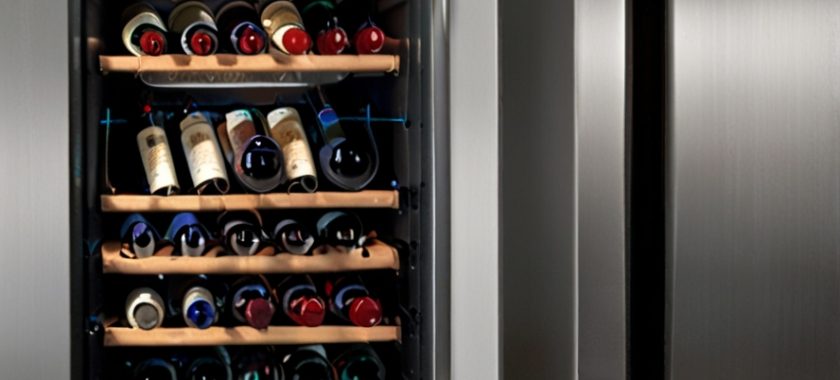Wine refrigerators, also known as wine coolers, are essential appliances for wine enthusiasts and collectors. They provide a controlled environment to preserve the quality and flavor of wines by maintaining optimal temperature and humidity levels. A key component in ensuring these conditions is the door sealing rubber, commonly referred to as the door gasket. This rubber seal prevents external air from entering and maintains the internal environment of the refrigerator. However, over time, wear or breakage of the door sealing rubber can occur, leading to significant issues. This article explores the causes of gasket wear and breakage, the consequences for wine storage, and the importance of timely maintenance and replacement.
Causes of Wear and Breakage
Material Fatigue: The constant opening and closing of the wine refrigerator door can lead to material fatigue in the rubber gasket. Over time, the repeated compression and decompression cause the rubber to lose its elasticity and sealing effectiveness.
Environmental Factors: The rubber gasket is exposed to fluctuating temperatures and humidity levels, which can cause it to become brittle or crack. High temperatures can accelerate the aging process of the rubber, while low temperatures can make it stiff and prone to breaking.
Chemical Exposure: Cleaning agents and accidental spillage of wine or other liquids can deteriorate the rubber material. Harsh chemicals and alcohol can degrade the rubber, leading to cracks and a reduced ability to form a tight seal.
Physical Damage: Accidental impacts, improper handling, or frequent use can cause tears or deformities in the gasket. Dirt and debris can also accumulate around the gasket, causing abrasion and wear over time.
Poor Installation: If the gasket is not installed correctly, it can wear unevenly or fail prematurely. Improper alignment can cause certain areas to be overly compressed, leading to accelerated degradation.
Consequences of a Worn or Broken Gasket
Temperature Fluctuations: The primary function of the door sealing rubber is to maintain a consistent internal temperature. A worn or broken gasket can allow warm air to enter the refrigerator, causing temperature fluctuations that negatively affect the wine. Wines stored at improper temperatures may age prematurely or develop undesirable flavors.
Increased Energy Consumption: When the door gasket is not sealing properly, the wine refrigerator has to work harder to maintain the set temperature. This leads to increased energy consumption and higher electricity bills. The compressor may run more frequently, leading to additional wear and potential breakdowns.
Humidity Imbalance: Proper humidity levels are crucial for preserving wine. A faulty gasket can cause the humidity inside the refrigerator to drop, leading to dry corks. Dry corks can shrink and allow air to enter the bottle, oxidizing the wine and ruining its flavor and quality.
Condensation and Mold Growth: A poor seal can cause condensation to form inside the refrigerator. Excess moisture can lead to mold growth on the gasket and around the refrigerator door. Mold not only damages the refrigerator but can also contaminate the wine labels and corks.
Shortened Lifespan of the Appliance: The increased workload on the refrigerator’s compressor and other components due to a faulty gasket can shorten the lifespan of the appliance. Frequent repairs and replacements can become costly over time.
Maintenance and Prevention
To prevent wear and breakage of the door sealing rubber, regular maintenance is essential. Here are some tips to ensure the longevity of the gasket:
Regular Cleaning: Clean the gasket regularly with mild soap and water to remove dirt, debris, and spills. Avoid using harsh chemicals that can degrade the rubber. Ensure the gasket is completely dry before closing the door.
Inspect for Damage: Regularly inspect the gasket for signs of wear, cracks, or deformities. Pay attention to areas that appear compressed or less pliable. Early detection of damage can prevent further deterioration.
Lubricate the Gasket: Applying a thin layer of petroleum jelly or a silicone-based lubricant can help keep the gasket supple and prevent it from drying out. This can extend the life of the gasket and maintain its sealing effectiveness.
Proper Door Usage: Avoid slamming the door and ensure it is closed gently but firmly. Ensure the refrigerator is level to prevent undue stress on the gasket. Also, avoid overfilling the refrigerator, as this can cause the door to not close properly.
Replace When Necessary: Despite regular maintenance, gaskets will eventually wear out. When the gasket no longer provides a tight seal, it should be replaced. Refer to the manufacturer’s instructions for the correct replacement part and installation procedure.
The door sealing rubber in wine refrigerators is a vital component that ensures the appliance functions efficiently and preserves the quality of the wine. Wear and breakage of the gasket can lead to temperature fluctuations, increased energy consumption, humidity imbalance, condensation, mold growth, and a shortened lifespan of the appliance. Regular maintenance, including cleaning, inspection, lubrication, and proper door usage, can help prolong the life of the gasket. When necessary, timely replacement of the gasket is crucial to maintain the optimal conditions for wine storage. By taking these steps, wine enthusiasts can ensure their wine refrigerators continue to protect their valuable collections for years to come.
Don’t let appliance malfunctions disrupt your daily routine. Trust Chula Vista Appliance Repair Company to get your appliances back up and running smoothly. Visit our website today to find out more about our exceptional services and how we can assist you. Experience the difference with Chula Vista Appliance Repair Company – your go-to expert for reliable appliance repairs.
Contact us
(619) 880-5508


